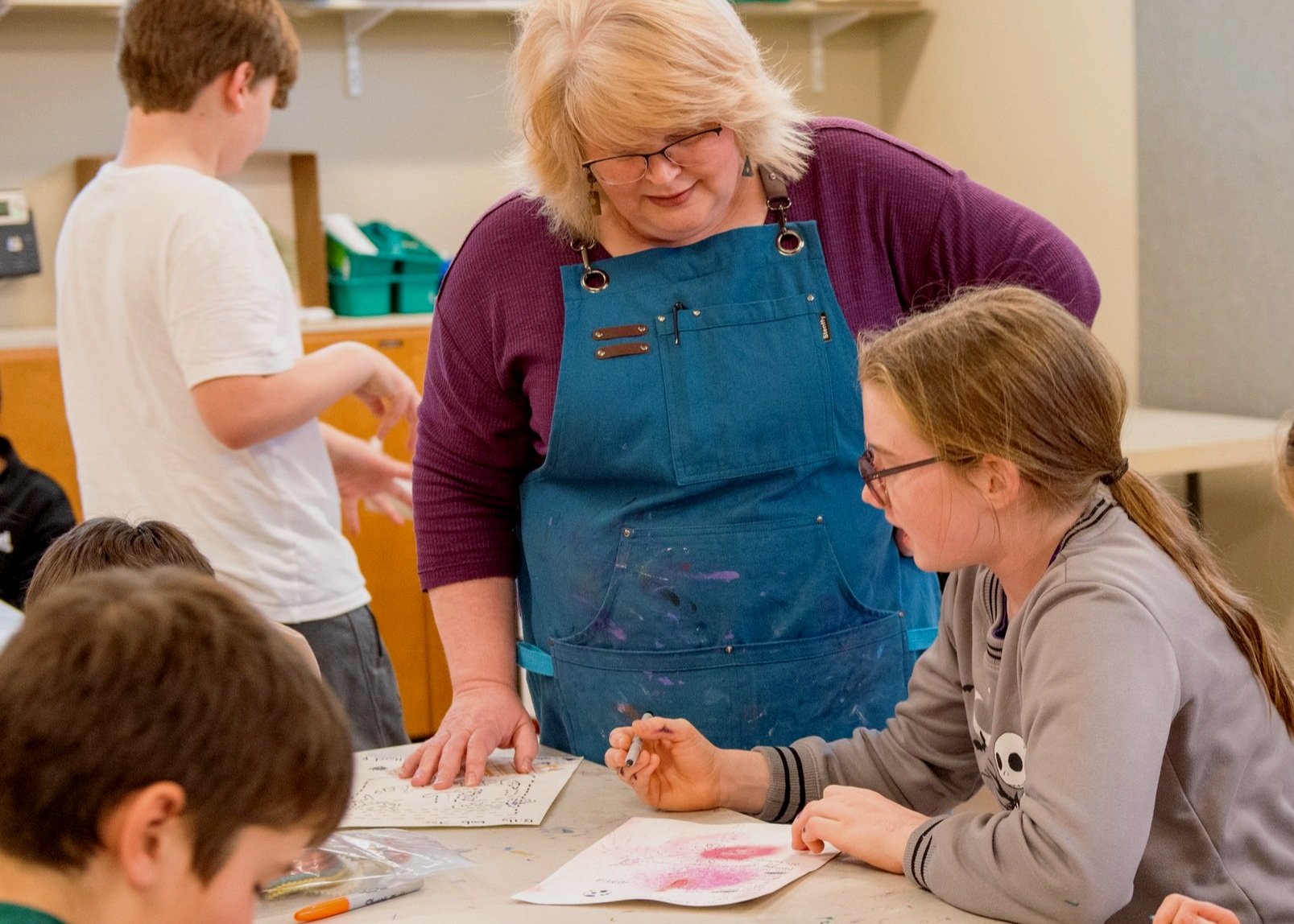
Upper Elementary
In the last three years of the elementary cycle, children launch into abstract exploration based on a foundation of rich concrete experiences in math, geometry and language. Students now use Montessori materials, to launch into new level of intellectual exploration of topics like algebra or deriving geometric formulas.
The classroom is a laboratory for studying, practicing, and creatively experimenting with both core subjects and a broader cultural, musical, and fine arts curriculum. As our students progress, we encourage both individual and cooperative learning to help them build an awareness of the interconnected nature of their studies and the world around them.
Quick Facts
Ages
About 9 to 12 years
Classrooms
One
Teachers
Two
Hours
8:10-8:30 a.m. drop-off; 3:30 p.m. pickup. Late Day is available until 5:30 p.m.
Curriculum
Mathematics
Children continue to broaden their mathematical skills with a variety of concepts, such as prime numbers, common and decimal fractions, percentages, and basic algebra. We also dive deeper into geometry, learn how to read and create graphs, and practice using both standard and metric measurements.
Language
The language curriculum teaches students how to use language to communicate effectively. We do this by giving them a solid understanding of grammar, teaching them the mechanics of written English, and helping them practice gathering, ordering, paraphrasing, and communicating information in different formats.
Culture
Through the study of history, civilizations, and the biological and physical sciences, we help children understand how the world has come to be. This allows them to examine their own responsibilities as citizens of this world and determine what their place may be.
Fine Arts
Students get to use our art studio to explore, experiment, and strengthen their creative problem-solving skills. They are exposed to a variety of different media, from colored pencils to pastels, and can work both cooperatively and independently as they learn to use specific techniques and tools.
Music
The goal of our music program is to instill a joy of music in children. We do this by listening to many different types and genres, singing with them, playing instruments, and through movement and dance.
Physical Education
We continue to build the students’ enjoyment of movement and physical activity through activities that focus on motor skills, coordination, and overall fitness. Sportsmanship and competition are encouraged while instilling core Montessori principles like grace, courtesy, and respect.
“FCM gives us independence. I like how there are no worksheets or staring at a screen all day. The work is adaptable depending on where you are in a subject. We also get to go on cool field trips to bond with our peers.”
— Upper Elementary Student













